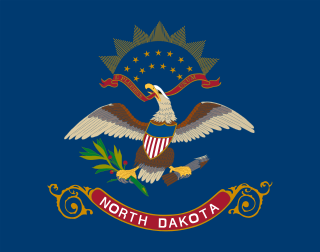It has been requested that the title of this article be changed to List of governors of South Dakota . Please see the relevant discussion on the discussion page. The page should not be moved unless the discussion is closed; summarizing the consensus achieved in support of the move. |
The Governor of South Dakota is the chief executive of the U.S. state of South Dakota. The current Governor is Republican Kristi Noem, serving since 2019. The Governor has the power to sign or veto laws, and to call the Legislative Assembly into emergency session. He has an ex officio North Dakota Governor's Residence. The governor may only serve two terms consecutively, and becomes eligible for reelection after four years out of office. [1] South Dakota is a strongly Republican state; only six Governors have not been members of that party and the governorship has been held by Republicans since 1979.

The Governor of South Dakota is the head of the executive branch of the government of the U.S. state of South Dakota. The governor is elected to a four-year term in even years when there is no Presidential election. The current governor is Kristi Noem, a Republican who took office on January 5, 2019.

In the United States, a state is a constituent political entity, of which there are currently 50. Bound together in a political union, each state holds governmental jurisdiction over a separate and defined geographic territory and shares its sovereignty with the federal government. Due to this shared sovereignty, Americans are citizens both of the federal republic and of the state in which they reside. State citizenship and residency are flexible, and no government approval is required to move between states, except for persons restricted by certain types of court orders. Four states use the term commonwealth rather than state in their full official names.

South Dakota is a U.S. state in the Midwestern region of the United States. It is named after the Lakota and Dakota Sioux Native American tribes, who compose a large portion of the population and historically dominated the territory. South Dakota is the seventeenth largest by area, but the fifth smallest by population and the 5th least densely populated of the 50 United States. As the southern part of the former Dakota Territory, South Dakota became a state on November 2, 1889, simultaneously with North Dakota. Pierre is the state capital and Sioux Falls, with a population of about 187,200, is South Dakota's largest city.









































